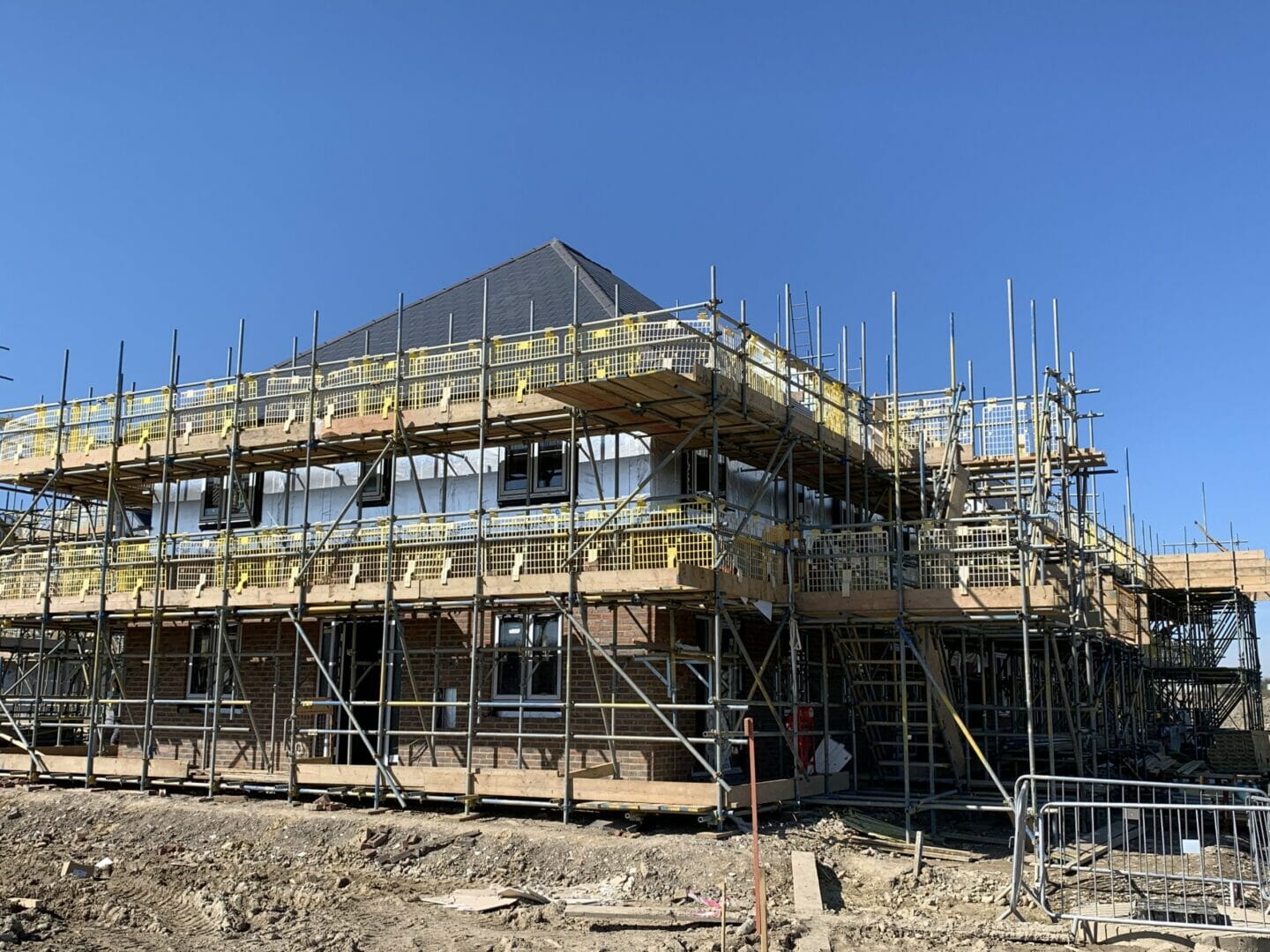
Kevin Blunden, Chartered Environmentalist as well as the Technical and Compliance Director at Harwood Building Control, gives his insights into how the house building industry needs to prepare for Future Home Standards and, in particular, changes to Part L and F of the Building Regulations.

Kevin, could you explain what the Future Home Standards is?
This is a set of proposals made in the Government’s 2019 consultation on The Future Homes Standard in which they proposed changes to Part L (conservation of fuel and power) and Part F (ventilation) of the building regulations.
The Government’s plan is that by 2025, the Future Homes Standard will deliver homes that are zero-carbon ready. This effectively means all new homes will be highly energy efficient and without fossil fuel heating. It extends to the provision of adequate ventilation through changes to Part F of the building regulations to align with the more airtight construction encouraged by Part L. The aim is that no further energy efficiency retrofit work will be necessary to enable new houses to become zero-carbon as the electricity grid continues to decarbonise.
So, what has prompted these changes?
The public’s expectations have changed, and they now have a far greater understanding of the environmental impact of house building. However, the desire to improve buildings and reduce environmental impact has always had to be balanced with what can be achieved by the building sector in terms of materials and construction methods. The materials used, how they are manufactured, and the construction methods applied in volume house building have not kept pace with environmental changes. The problem is further exacerbated by the fact that those houses built over the last century will be lived in for many years to come and will not significantly contribute to the UK’s target of bringing all greenhouse gas emissions to net zero by 2050.
Do you think these changes are sufficient?
I think these changes are no surprise. For the past 20 years the Government’s strategy for the development of Energy Performance Standards under Part L of the building regulations has been piecemeal. They have adopted an approach of incremental improvement to previous standards and only a gradual reduction in CO2 emissions, and only applied these changes to the designs at the time when the development started. This has seen many new properties being completed today based upon standards introduced over a decade ago. Effectively, these requirements will be used as an improved standard, with more encouragement to exceed the minimum requirements.
What are the timelines and roadmap for these changes?
The full technical specification has been accelerated with consultation due in 2023, legislation in 2024 and implementation in 2025. Ahead of that, the Government has indicated that an interim uplift in Part L standards is to be published around October 2021 to encourage houses to be future-proofed and move the industry towards their wider objective.
You mentioned earlier that those properties that have been built over the last century will not significantly contribute to the UK’s greenhouse gas emissions target, how will the Future Home Standards overcome this?
While we can’t readily solve what has gone on before, we can avoid the problem getting worse. The new Standards will ensure that as many homes as possible are being built in line with the new energy efficiency standards. Transitional arrangements will now apply to individual homes rather than an entire development. This will see the next change to Part L introduce a requirement that it will be the date on which work starts on a new building determining the standards which apply. This is as opposed to the current position where it is the date on which the application was submitted, or that when work started on other plots on a development, which drives the applicable standards.
Whilst standards are changing for extensions to existing properties and the efficiencies of replacement boilers are significantly better than those previously installed, there is still little to be done to improve the general insulation standards, energy use and associated emissions from existing properties.
Why do you think the Government is making these changes now?
The Government has always planned to regularly review standards and change is overdue. This, coupled with a worsening climate change crisis and the fact that they felt the construction industry was not moving quickly enough towards implementing higher environmental standards, and builders were simply content in achieving compliance with the historic minimum standards, has led to this change. The Government’s appetite for whole industries to make a marked environmental change should not be underestimated with the automotive industry being told that sales of new petrol and diesel cars will end by 2030.
By applying the ‘stick’ of legislative change, the Government hopes to instigate considerable improvements in building specifications, skills and supply chains which will stimulate innovation and learning in the sector. Ultimately this should drive significant change and a shift in the culture in the construction sector in respect of environmental issues. Perhaps of a similar scale to that which we have seen in respect of the consideration of fire safety post Grenfell.
These Standards will provide the foundations for introducing world-leading performance standards incorporating low-carbon heat in new homes by 2025.
Do you foresee any challenges to these changes?
With a greater emphasis on specifications which are better than the minimum standards, together with a larger focus on the performance of materials and standards of workmanship this should all help deliver an improved outcome for the environment and new house buyers. The challenge will be in communicating the benefits of these changes to customers to ensure that they value the improvements and can appreciate the longer-term savings.
We know that for most homeowners there are many higher priorities than the environmental impact of their home, and they may pay little attention to the Energy Performance Certificate rating, so it may be difficult when comparing the price of new houses against older building stock, to appreciate that they are getting a higher specified product.
Ultimately the ‘carrot’ is always better that the ‘stick’, so as an industry we need to embrace these legislative changes and build a position where customers not only desire new eco-friendly homes but recognise the value and are prepared to pay the premium.
Can you offer any advice for housebuilders?
I always recommend partnering with a good and reputable building control partner who has vast knowledge and expertise in all elements of construction, fire safety, statutory legislation, and standards. At Harwood we are here to advise and assist in your preparations for the Future Home Standards, as well as navigate the current and any upcoming changes. So, if you have any particular questions, I urge you to get in contact directly.
Kevin Blunden is the Technical & Compliance Director at Harwood Building Control. Kevin’s role focuses on technical standards, compliance, and education and as a Chartered Environmentalist he seeks to ensure that Harwood’s contribution to a project keeps the potential negative impact on the environment to a minimum.
For more information about Harwood and how their building control inspection services can add value to your projects, get in touch today on 01227 931 777 or email [email protected].
